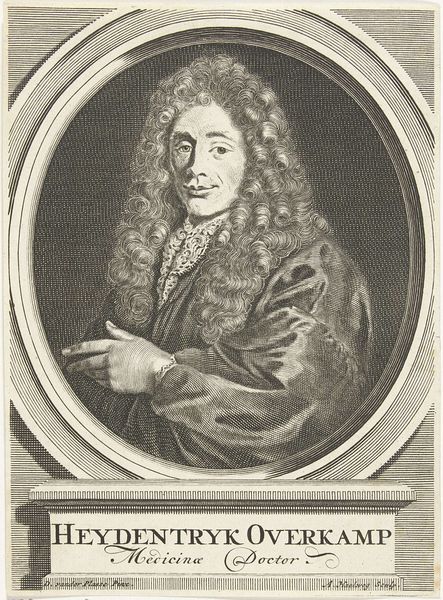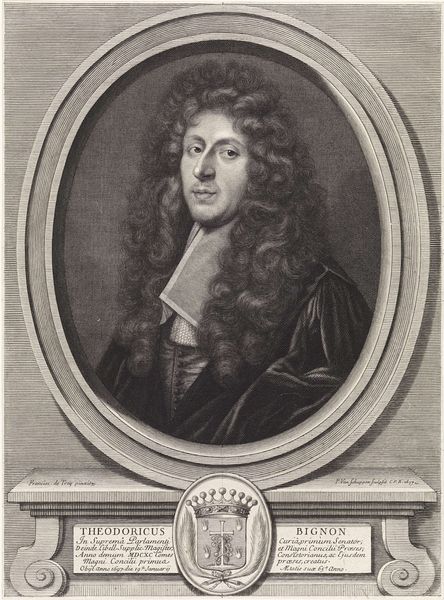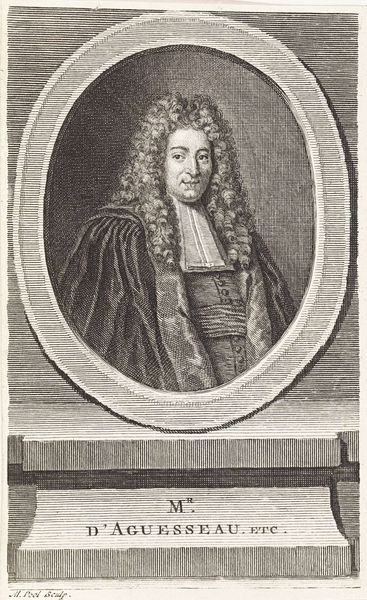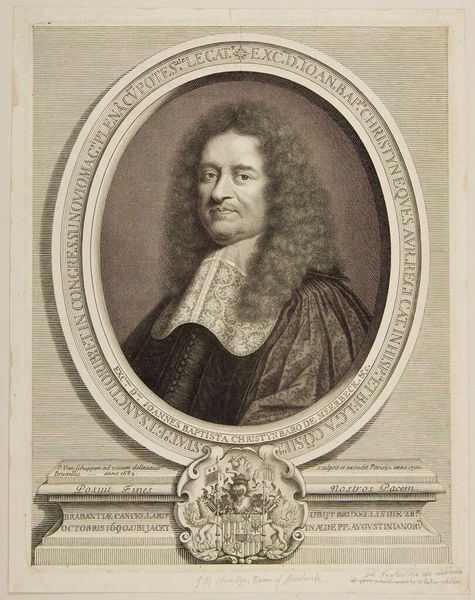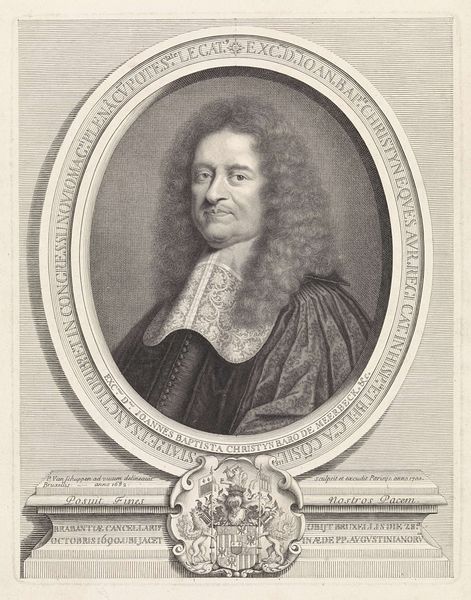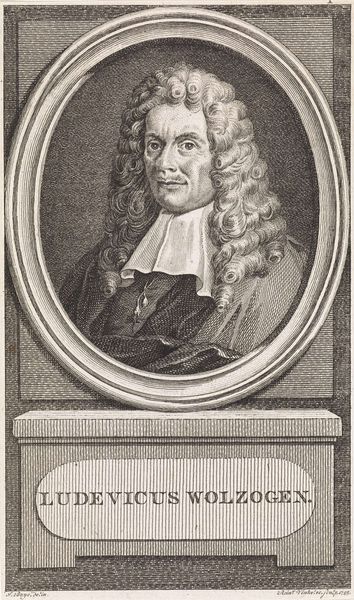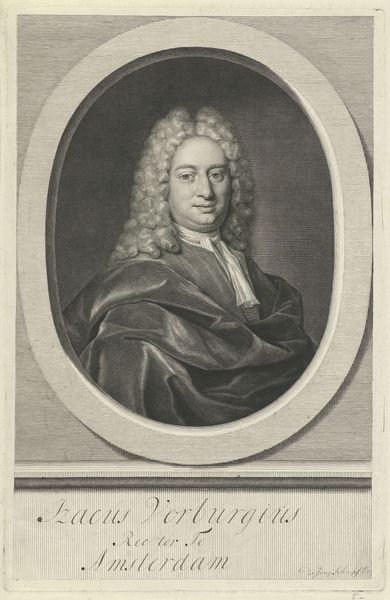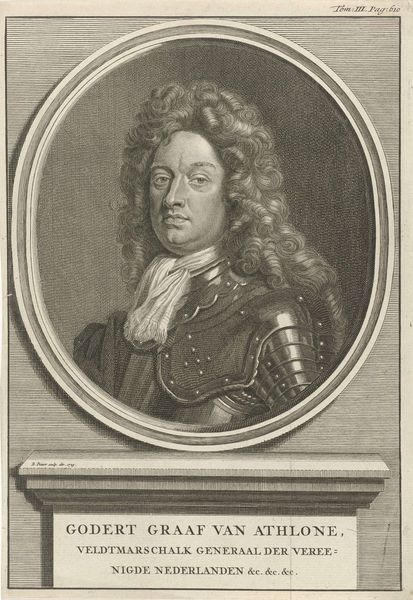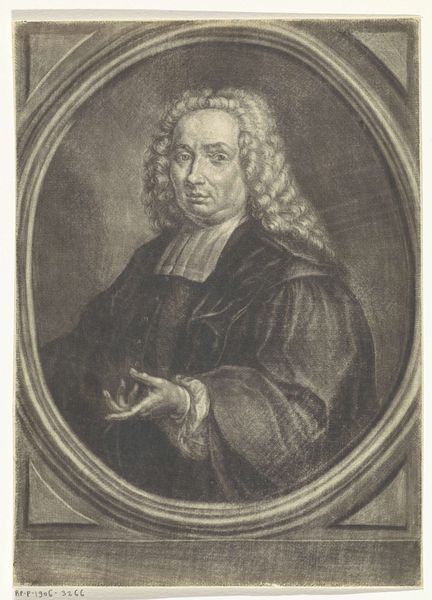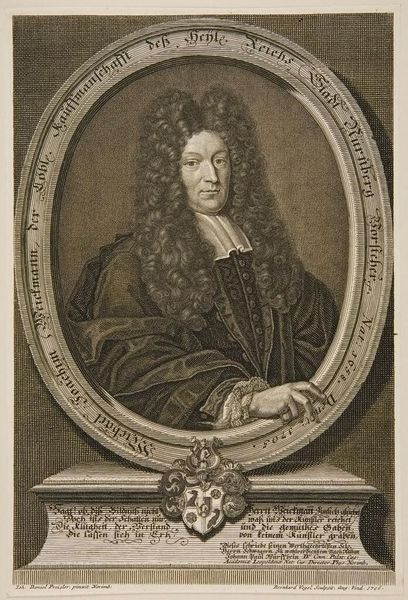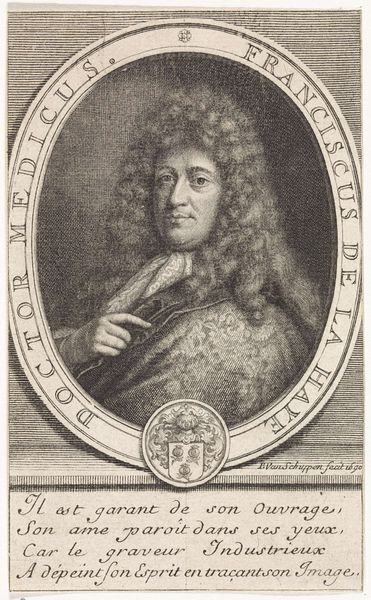
drawing, print, engraving
#
portrait
#
drawing
#
baroque
# print
#
charcoal drawing
#
engraving
Dimensions: height 153 mm, width 103 mm
Copyright: Rijks Museum: Open Domain
Editor: Here we have "Portret van de Franse chemicus Nicolas Lemery," dating from between 1710 and 1784, attributed to Frans Pilsen. It seems to be an engraving or print of a charcoal drawing. What stands out to me is the intense detail achieved, particularly given the medium. What strikes you about this piece? Curator: For me, it is interesting to look at how material processes of the era dictated image production, specifically scientific and philosophical notions that art making relied upon. We should remember the engraver, Pilsen, as artisan, a critical producer who made Lemery visible. Editor: An artisan! That's a perspective I hadn't considered. In art history, the focus is always on the artist’s intention... Curator: And what is the engraver's intention in this context? How did their tools – the burin, the copper plate, the ink – affect the final product and how many reproductions of this existed, each copy with varied impact depending on location and receiver? What sort of labour was required? It is the process itself that renders the portrayed significant and distributes knowledge of him, think about the implications that can be found in those actions. Editor: So, instead of focusing solely on Lemery as a subject, we think about the print's function as a means of distributing his image and reputation, a consequence of repetitive craft production... Almost a scientific approach mirroring the chemist. Curator: Precisely. It also begs the question: to what degree does the printed image of Lemery affect his power? Power isn't solely located in the figure, it resides also in those who replicate. Consider what the portrait's widespread production signified in terms of both Lemery's social capital and Pilsen's contributions. Editor: I see what you mean! I always thought prints were just reproductions of "real art," but now I understand how the medium itself is deeply embedded in the work's meaning. Thank you! Curator: It changes your understanding once you centre materials, processes, and their related implications, doesn't it?
Comments
No comments
Be the first to comment and join the conversation on the ultimate creative platform.
